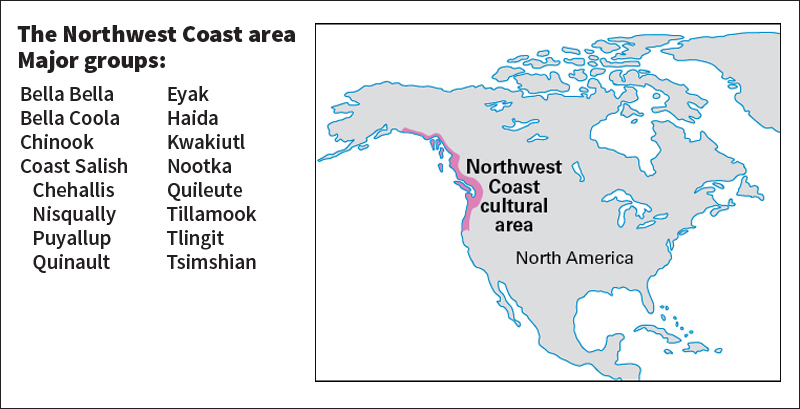Tlingit << KLIHN kiht or TLIHNG giht >> are an Indigenous (native) people that live mainly along the coast of southeastern Alaska. They once controlled lands that extended more than 500 miles (800 kilometers) from west of Yakutat Bay to the British Columbia border south of present-day Ketchikan. In Canada, they are recognized as a First Nations people. The Tlingit divided the area into about 15 territories called quans (also spelled kwans). All Tlingit spoke related dialects of one language.

In their traditional way of life, the Tlingit fished, hunted deer and seals, and gathered berries, bird eggs, and shellfish. To prepare for winter, they smoked, pickled, and dried their foods. In winter, the Tlingit lived in large plank houses, each of which sheltered many related families. Tlingit woodworkers carved masks, totem poles, and other objects.
Tlingit society continues to be strictly ranked. Many personal positions in the tribe are confirmed during feasts called potlatches, in which the hosts give gifts to guests. The Tlingit are divided into two groups–the Ravens and the Eagles or Wolves. Each group has many clans. All Tlingit belong to their mother’s clan. Members of Raven clans may marry only members of the Eagles, and Eagle members may marry only Ravens.
In the late 1700’s, the Russians became the first Europeans to establish relations with the Tlingit. But the Russians left the area in 1867, when the United States bought Alaska from Russia. Some Tlingit belong to the Russian Orthodox Church.
According to the 2020 U.S. census, there are about 13,000 Tlingit and Haida people. The Tlingit and Haida share a common tribal government and have a similar culture. Many work in the logging and fishing industries or have moved to large cities. The Tlingit received money and land as a result of the Alaska Native Claims Settlement Act of 1971 (see Alaska (Land-use issues)).
